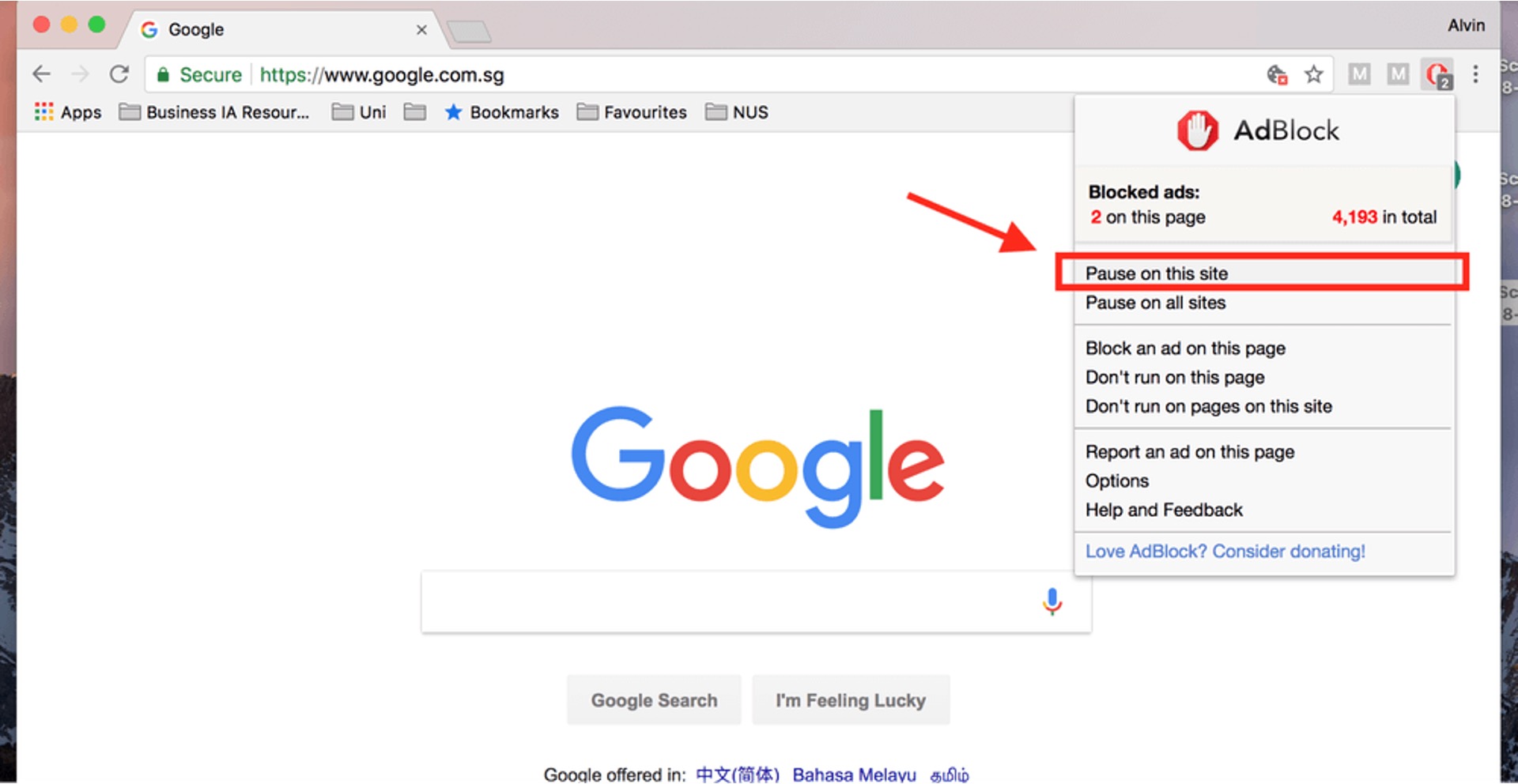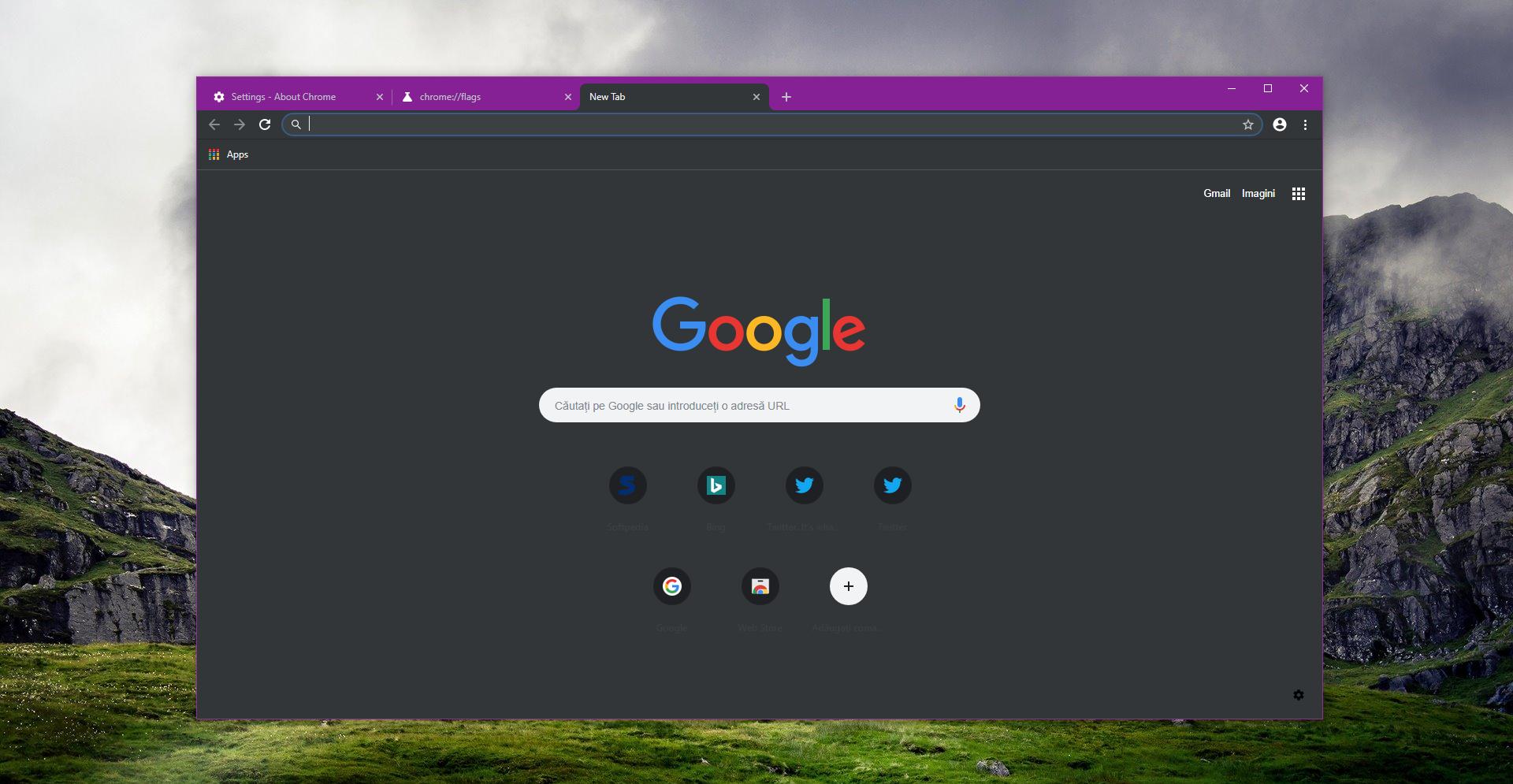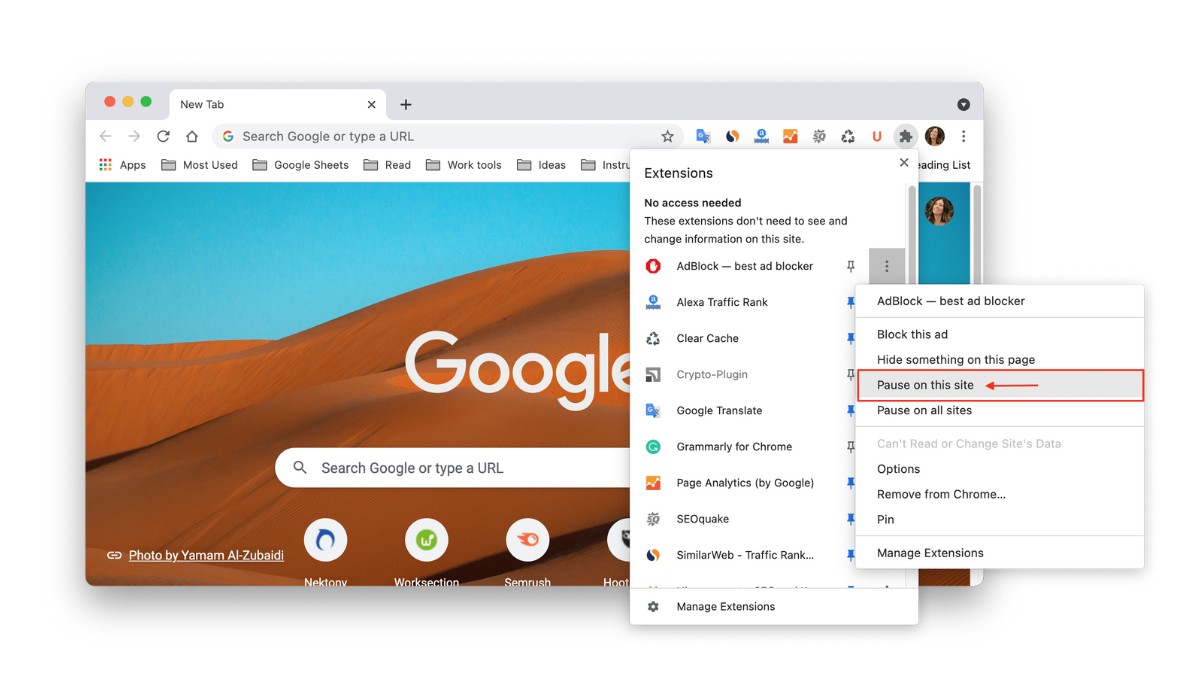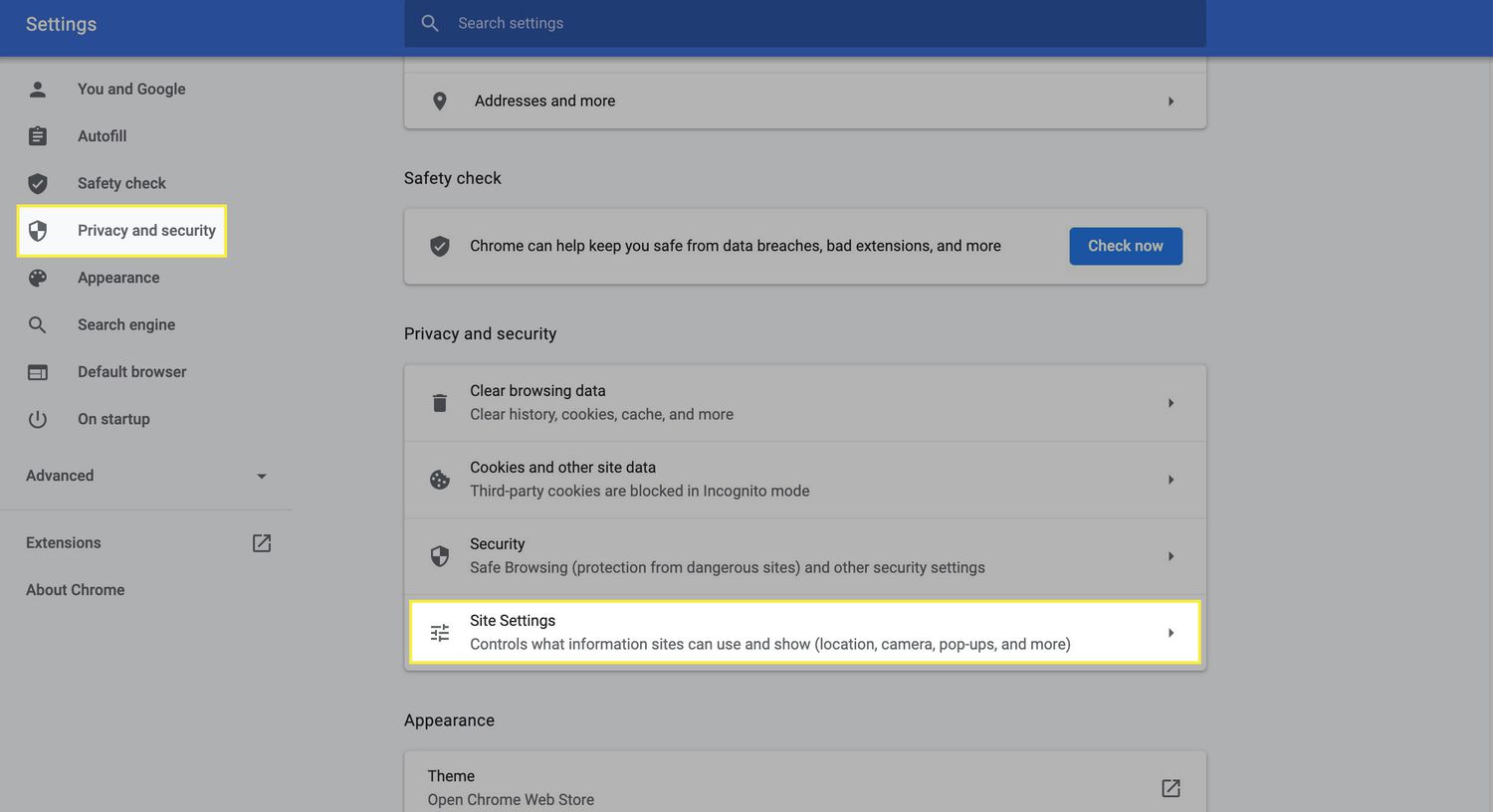Introduction
In today's digital age, web browsers have become an integral part of our daily lives, serving as gateways to a vast online world. Chrome, one of the most popular browsers, offers a plethora of features and extensions that enhance the browsing experience. However, at times, these very features, such as ad blockers and pop-up blockers, can inadvertently hinder our browsing activities. Understanding how to manage and disable these blockers can significantly improve our online interactions.
As we delve into the intricacies of Chrome's blockers, it's essential to recognize the impact they have on our browsing experience. Ad blockers, for instance, are designed to filter out intrusive advertisements that disrupt our online activities. While this can be beneficial, it's important to understand that some websites rely on ad revenue to sustain their operations. By learning how to disable ad blockers, we can choose to support these websites and ensure their continued existence.
Similarly, pop-up blockers serve a crucial purpose in preventing unwanted pop-up windows from disrupting our browsing sessions. However, there are instances where we may need to access legitimate pop-ups, such as those containing important information or interactive content. Knowing how to disable pop-up blockers on Chrome empowers us to control our browsing environment and access the content we need without unnecessary hindrances.
In the following sections, we will explore the intricacies of ad blockers and pop-up blockers on Chrome, providing insights into how to effectively disable them when necessary. By gaining a deeper understanding of these features and learning how to manage them, we can optimize our browsing experience and make the most of Chrome's capabilities. Let's embark on this journey to unravel the nuances of Chrome's blockers and empower ourselves with the knowledge to navigate the digital realm seamlessly.
Understanding Ad Blockers
Ad blockers are browser extensions or software designed to prevent advertisements from displaying on web pages. These ads can range from banner ads and pop-ups to video ads, and while they are a common feature of the online landscape, they can also be intrusive and disruptive to the user experience. Ad blockers work by identifying elements on a web page that are associated with advertising and preventing them from loading or displaying. This results in a cleaner, less cluttered browsing experience for users.
The primary purpose of ad blockers is to enhance user experience by reducing the visual clutter and distractions caused by ads. They can also contribute to faster page loading times by preventing the loading of ad-related content. Additionally, ad blockers can help protect users from potentially malicious or deceptive ads that may lead to phishing sites or malware.
However, it's important to recognize that while ad blockers offer these benefits, they also have implications for content creators and website owners. Many websites rely on advertising revenue to support their operations and provide free content to users. By blocking ads, users may inadvertently deprive these websites of the revenue they need to sustain their services.
Furthermore, the use of ad blockers has sparked debates regarding the ethics of ad blocking and its impact on the sustainability of online content. Content creators and publishers often face the challenge of balancing user experience with the need to generate revenue through advertising. As a result, some websites have implemented measures to detect ad blockers and request users to disable them in order to access their content.
In recent years, there has been a growing trend of "acceptable ads" programs, where ad blockers allow certain non-intrusive ads to be displayed by default. This approach aims to strike a balance between ad blocking and supporting non-disruptive advertising that benefits both users and content creators.
Understanding the role and impact of ad blockers is crucial for users who seek to make informed decisions about their browsing experience. While ad blockers offer undeniable benefits in terms of user control and security, it's essential to consider their broader implications for the online ecosystem. By gaining a deeper understanding of ad blockers, users can navigate the complexities of online advertising and make conscious choices regarding their use.
Disabling Ad Blockers on Chrome
Disabling ad blockers on Chrome is a straightforward process that allows users to customize their browsing experience based on their preferences and needs. Whether it's to support websites that rely on ad revenue or to access specific content that may be blocked by ad blockers, understanding how to disable ad blockers on Chrome empowers users to make informed choices about their online interactions.
To disable ad blockers on Chrome, users can follow these simple steps:
-
Accessing Chrome Extensions: Start by opening the Chrome browser and navigating to the menu represented by three vertical dots in the top-right corner. From the dropdown menu, select "More tools" and then click on "Extensions." This will open the Extensions page, where all installed extensions, including ad blockers, are listed.
-
Locating the Ad Blocker Extension: On the Extensions page, users can scroll through the list to locate the ad blocker extension they wish to disable. The extension name and icon will be displayed, making it easy to identify.
-
Disabling the Ad Blocker: Once the ad blocker extension is located, users can disable it by toggling the switch next to the extension name. This action effectively turns off the ad blocker, allowing ads to be displayed on web pages.
-
Customizing Ad Blocker Settings: Some ad blocker extensions offer additional settings and customization options. Users can explore the extension's settings to fine-tune their ad blocking preferences or temporarily disable specific features while keeping the extension active.
-
Refreshing Web Pages: After disabling the ad blocker, users may need to refresh the web pages they were browsing to see the changes. Once the ad blocker is disabled, ads that were previously blocked will be visible on the refreshed pages.
It's important to note that while disabling ad blockers on Chrome allows ads to be displayed, users retain the flexibility to re-enable the ad blocker at any time. This level of control enables users to switch between ad-free and ad-supported browsing based on their current needs and preferences.
By understanding how to disable ad blockers on Chrome, users can actively engage with the content and advertising ecosystem while maintaining control over their browsing environment. This knowledge empowers users to support websites, access specific content, and strike a balance between ad-free and ad-supported browsing experiences. Ultimately, the ability to disable ad blockers on Chrome reflects the user-centric approach that Chrome embodies, offering flexibility and customization to enhance the browsing journey.
Disabling Pop-up Blockers on Chrome
Pop-up blockers are a valuable feature in web browsers, including Chrome, as they prevent intrusive pop-up windows from disrupting the browsing experience. However, there are instances where users may need to access legitimate pop-ups, such as those containing important information, login prompts, or interactive content. Understanding how to disable pop-up blockers on Chrome empowers users to manage their browsing environment effectively and access the content they need without unnecessary hindrances.
To disable pop-up blockers on Chrome, users can follow these simple steps:
-
Accessing Chrome Settings: Begin by opening the Chrome browser and clicking on the menu icon represented by three vertical dots in the top-right corner. From the dropdown menu, select "Settings" to access the browser's configuration options.
-
Navigating to Site Settings: Within the Settings menu, scroll down and click on "Privacy and security" to reveal additional options. Then, select "Site settings" to access a range of site-specific permissions and configurations.
-
Managing Pop-ups: Under the "Permissions" section, locate and click on "Pop-ups and redirects." This will open the Pop-ups and redirects settings, where users can manage the behavior of pop-ups on Chrome.
-
Disabling Pop-up Blocker: To disable the pop-up blocker, users can toggle the switch next to "Blocked (recommended)" to turn off the pop-up blocker feature. This action allows pop-ups to be displayed on websites, providing users with access to relevant and legitimate pop-up content.
-
Customizing Pop-up Settings: Chrome also offers the option to customize pop-up settings on a per-site basis. Users can add specific websites to the "Allow" list, ensuring that pop-ups are permitted only on selected sites while remaining blocked on others.
By understanding how to disable pop-up blockers on Chrome, users gain the flexibility to manage pop-up behavior according to their specific needs. Whether it's enabling pop-ups for a particular website or temporarily allowing pop-ups to access essential content, the ability to customize pop-up settings enhances the browsing experience.
Ultimately, the process of disabling pop-up blockers on Chrome reflects the browser's user-centric approach, providing users with the tools to tailor their browsing environment to suit their preferences. This level of control empowers users to engage with pop-up content while maintaining a secure and personalized browsing experience.
Conclusion
In conclusion, the ability to manage and disable blockers, such as ad blockers and pop-up blockers, on Chrome is a valuable asset for users seeking to tailor their browsing experience to their specific needs. By understanding the nuances of these blockers and learning how to effectively disable them, users can navigate the digital landscape with greater control and flexibility.
The role of ad blockers in streamlining the browsing experience while protecting users from intrusive ads is undeniable. However, it's essential to recognize the broader impact of ad blockers on content creators and the online ecosystem. By gaining insights into the functionality of ad blockers and the implications of their use, users can make informed decisions about when to disable them to support websites that rely on ad revenue.
Similarly, pop-up blockers serve as a shield against disruptive pop-up windows, contributing to a smoother and more secure browsing experience. Knowing how to disable pop-up blockers empowers users to access legitimate pop-up content while retaining the ability to manage pop-up behavior based on their preferences.
The user-centric approach of Chrome is evident in its provision of intuitive tools and settings that enable users to customize their browsing environment. The ability to disable blockers reflects Chrome's commitment to empowering users with control over their online interactions, striking a balance between user experience and website sustainability.
As users continue to engage with the digital realm, the knowledge of how to disable blockers on Chrome serves as a testament to the empowerment and autonomy that users possess in shaping their browsing journey. By leveraging this knowledge, users can actively support content creators, access essential content, and curate a personalized browsing experience that aligns with their preferences.
In essence, the journey of understanding and disabling blockers on Chrome is a testament to the evolving dynamics of online interactions. It underscores the significance of user agency and informed decision-making in navigating the complexities of the digital landscape. With the ability to disable blockers at their fingertips, users can embrace a browsing experience that seamlessly integrates control, flexibility, and support for the online ecosystem.

























